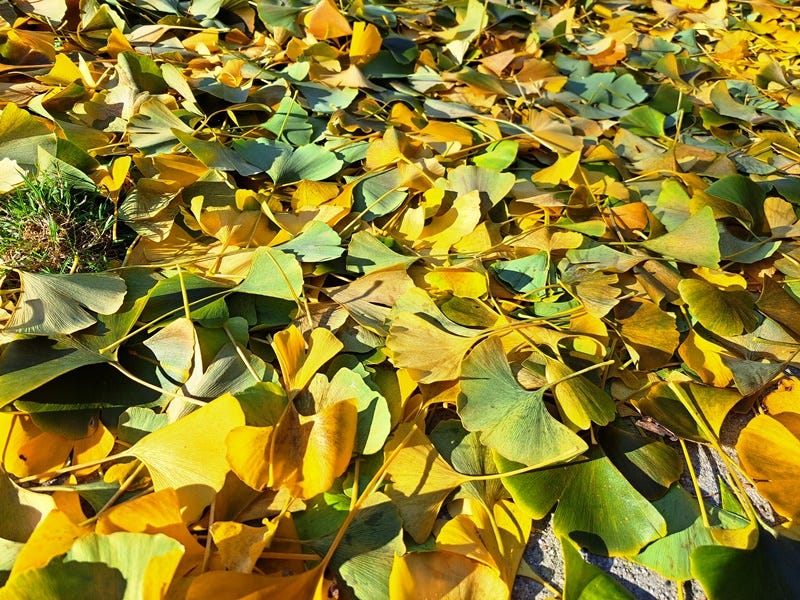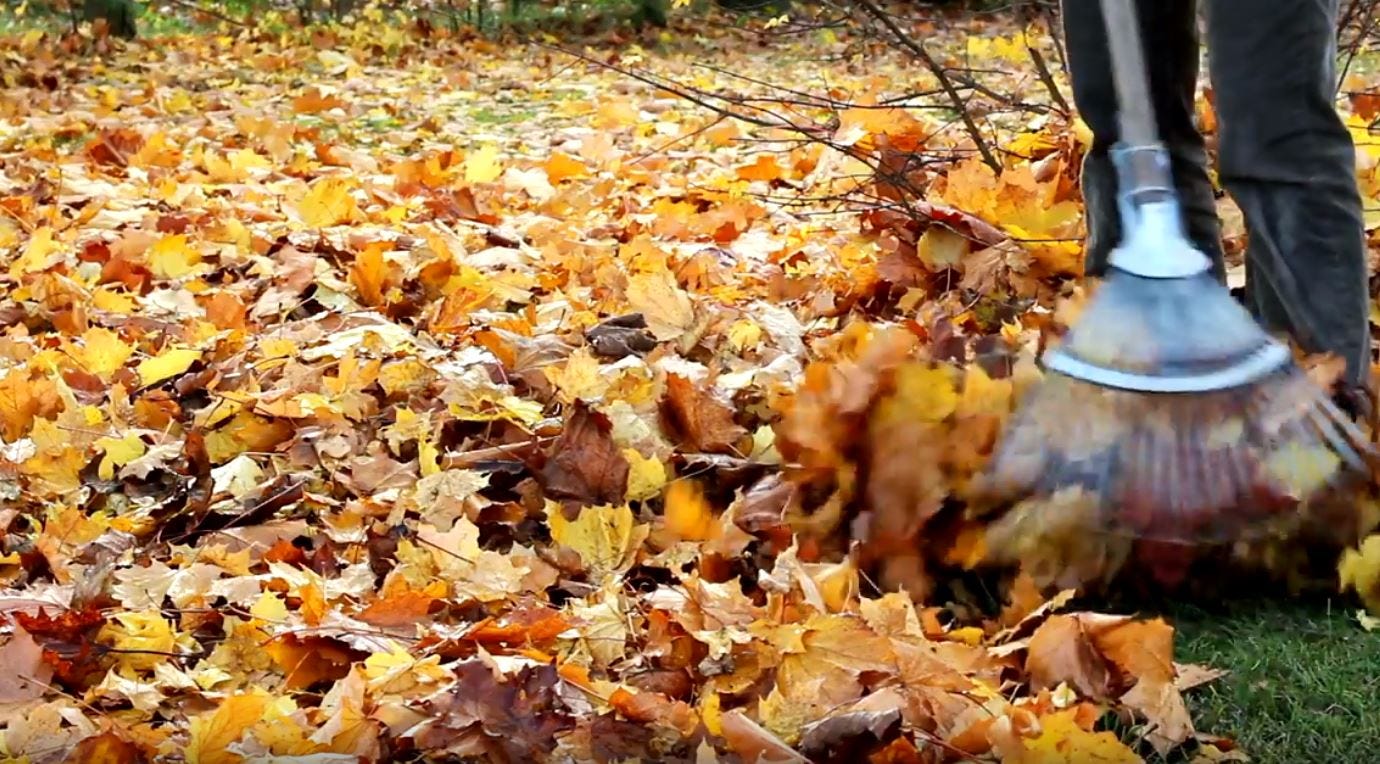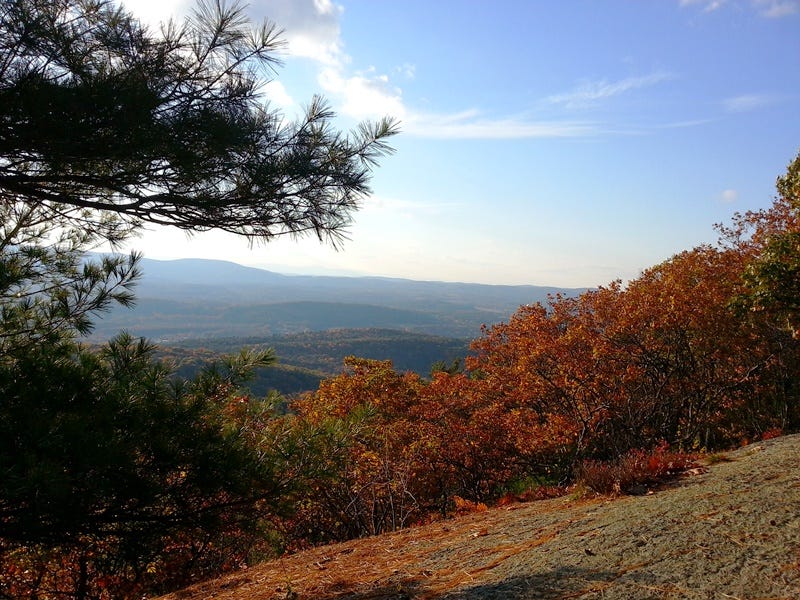What's wrong with raking?
Free soil conditioner & mulch with no weeds that is also good for insects & wildlife
When I read blithe advice to “just leave the leaves” I think of the time I almost went into a river when my car skidded on wet leaves. The maple leaves so common here in New England settle into dark slimy layer. And leaves aren’t apples that simply fall to the ground - they get blown around and end up in places where they can cause problems.
The video illustrating the New York Times story “Why You Don’t Need to Rake Leaves” (free gift link) is a bad choice because a heavy layer of maple leaves like this really does need to be removed if you don’t want to smother your lawn
The big thing the experts miss is just how much variation there is in leaves - just as there is in the trees they fall from.
What the experts should be talking about is that THERE ARE NO WEED SEEDS!
Those Norway maple leaves are a pain. Black walnut leaves come with long tough stems, and contain a chemical that will kill some plants. Ash leaves are fine. I can follow the experts’ advice and rake them from the driveway onto flower borders as a mulch that breaks down nicely.
My favorite leaves are oak and chestnut because they are crisp and a little curly, so they don’t compact and go slimy. I used to welcome those that blew my way. Then a few years ago I went to talk to a man who clearing a lawn of oak leaves. Since, he delivers a huge pile every October. He comes from the Czech Republic and sees leaves as a wonderful garden resource, just as the experts do now. (October is Leaves the Leaves Month to go with No Mow May.)
Here’s UK celebrity gardener Monty Don in “A rake is progress: Don’t leave your leaves to moulder where they fall”:
…Leafmould is gardening gold.
It is a perfect soil conditioner and mulch for all woodland plants as well as improving any potting compost and a very good substitute for peat.
It is dead easy to make and costs absolutely nothing. So go on, treat yourself, make the most of your precious fallen leaves.
His advice is not to leave the leaves where they fall but to move them into bins to break down into “leafmould,” the soft, crumbly dark brown substance that works so beautifully as a mulch.
He makes a crucial point that it took years to learn: leaves have to be wet to break down quickly. I used to have a wire leaf bin (left) that worked well except that it was under a big fir and never got any rain. My current pile (right) is exposed to rain.
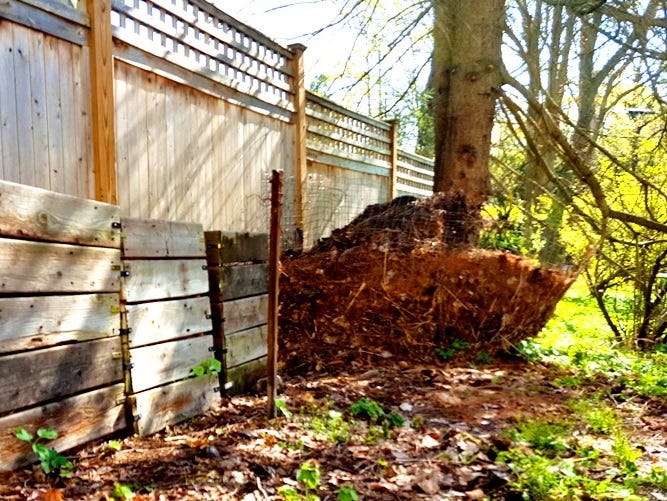

The US National Wildlife Foundation wants us to leave the leaves alone for these reasons:
Provides Habitat - Fallen leaves, dried stems, grasses and fallen twigs provide essential cover for many types of wildlife to survive the coming colder months.
Keeps Organic Matter Out of Landfill - Leaving leaves can help reduce the volume of organic material being sent to landfills and the amount of greenhouse gasses (methane) contributing to climate change.
Keeping Leaves Saves You Money and Time - Leaving the leaves does not require bagging and piling leaves into the street for pick up. Fallen leaves are natural mulch and fertilizer for your landscape. It’s a form of recycling/reusing.
What the experts should be talking about is that THERE ARE NO WEED SEEDS!
Of course you may not have space for a big leaf pile or bin. In that case, you’ll really want to find ways to let the leaves lie. There are lots of creative approaches. My neighbor Sharon Gregory has developed a system that works well for her. She uses cardboard boxes to gather the leaves (using a big black funnel), and places them next to a steel composting bin she’s used for 10 years. “It is mostly for my food waste which I supplement with dirt and leaves to accelerate composting. As the leaves compost down, sometimes I add them to my steel bin.”
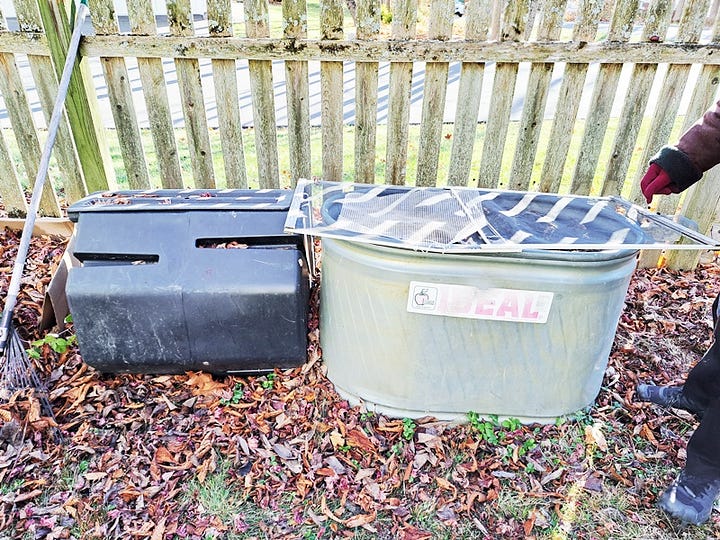
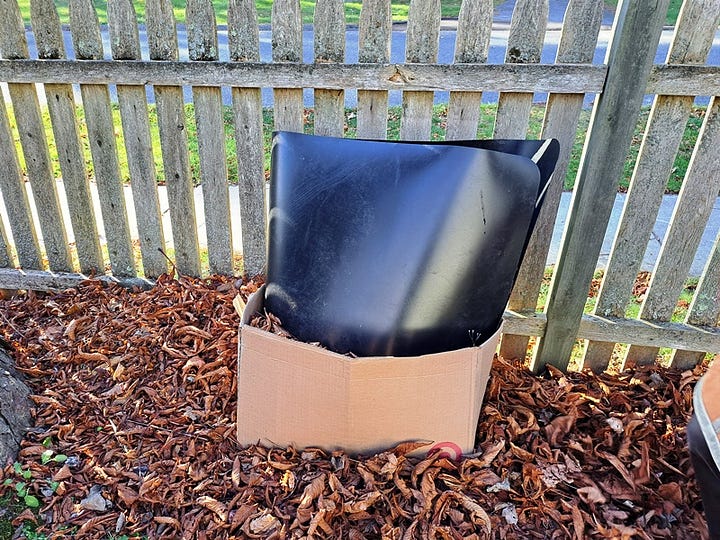
Other neighbors pile leaves around their trees, which looks great and is convenient as long as they don’t blow away. If leaves on the lawn look too dense, it can be easier to run a mower over them than to rake, and these chopped leaves are great for the lawn.
We have a lot of leaves here in New England! This is a nearby view, looking south to Connecticut along the Housatonic Valley.




